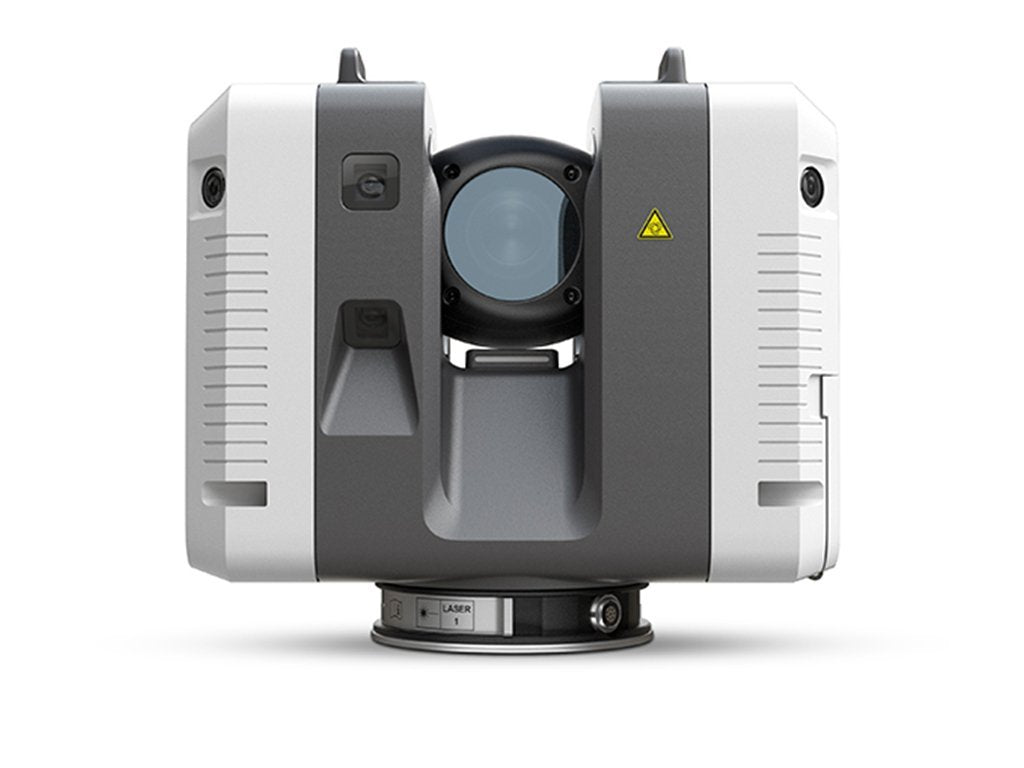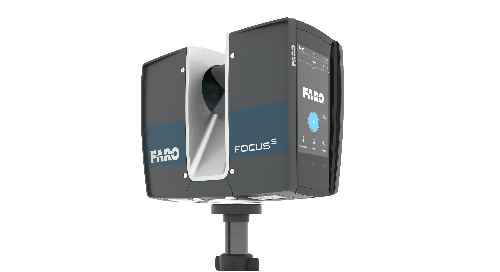Discovering the Applications of 3D Laser Scanning in Archaeology and Cultural Heritage Conservation
The assimilation of 3D laser scanning technology in archaeology and cultural heritage preservation marks a significant development in how historical sites and artifacts are documented and analyzed. This non-invasive method provides precise spatial data, revealing intricate details that were formerly hard to record. As the applications of this modern technology proceed to progress, different ramifications for education, documentation, and preservation emerge, inviting further expedition right into its transformative effect on the field.
Understanding 3D Laser Scanning Technology
3D laser scanning modern technology has actually transformed the area of archaeology by supplying exact and in-depth spatial data. This innovative modern technology utilizes laser beams to capture numerous information points from a things or site, creating a very precise three-dimensional representation (3D Scanning). The resulting factor clouds can expose intricate information of historical sites, frameworks, and artefacts that could be invisible to the nude eye
Utilizing this innovation, archaeologists can document the exact measurements, forms, and settings of objects with extraordinary accuracy. This technique minimizes the danger of human mistake and eliminates the demand for comprehensive hand-operated measurements. The information collected can be evaluated and shared conveniently, facilitating partnership amongst scientists. By incorporating 3D laser scanning with GIS and other digital devices, excavators boost their ability to imagine and translate historic contexts, leading to deeper insights into old societies and environments.
Enhancing Archaeological Paperwork
3D laser scanning substantially boosts archaeological documentation with its capability to produce precise website maps. This modern technology facilitates detailed artifact analysis, offering understandings that typical methods may neglect. On top of that, it ensures the preservation of contextual information, which is essential for understanding the relationships within historical sites.
Exact Website Mapping
While typical mapping approaches often fight with capturing the intricate details of archaeological sites, advanced laser scanning technology provides a revolutionary approach to accurate site mapping. This method makes it possible for excavators to develop extremely outlined and accurate three-dimensional representations of sites, showcasing topographical variants and structural features with remarkable integrity. The capacity to catch countless data factors in an issue of minutes enables extensive documentation, which can be conveniently upgraded and shared among scientists. Furthermore, laser scanning helps with the measurement of intricate geometries that would be difficult to analyze utilizing traditional tools. Because of this, this innovation enhances the precision of site maps, adding substantially to the preservation and understanding of cultural heritage sources.
Detailed Artefact Analysis
Laser scanning modern technology considerably enhances the evaluation of archaeological artefacts, providing scientists with unprecedented information and accuracy. This approach catches elaborate surface area structures, dimensions, and includes that traditional documents techniques might ignore. By generating high-resolution 3D versions, scholars can carefully examine artefacts without the danger of damage inherent in physical handling. This precision permits much better comparative researches, making it possible for specialists to determine production methods, stylistic variants, and potential social importance. The capability to adjust and imagine information in 3 dimensions promotes a deeper understanding of artifact performance and use. On the whole, laser scanning promotes an extra extensive strategy to archaeological paperwork, ensuring that vital details about artifacts is preserved for future research study and education.
Preservation of Contextual Information
Maintaining contextual information is important for enhancing archaeological paperwork, as it guarantees that searchings for are recognized within their initial environmental and social frameworks. 3D laser scanning modern technology significantly contributes to this preservation effort by capturing detailed spatial relationships among artefacts, frameworks, and their settings. By producing exact 3D designs, excavators can record the precise locations and orientations of objects in situ, facilitating a detailed understanding of their context. This technology allows scientists to review and evaluate sites long after excavation, preserving the integrity of contextual information. On top of that, electronic documents developed with scanning can be shared worldwide, promoting collective research study and public engagement. Ultimately, maintaining contextual data with 3D laser scanning enhances archaeological narratives and promotes a more extensive appreciation of cultural heritage.
Conservation of Cultural Heritage Sites
As improvements in innovation proceed to progress, the preservation of social heritage websites has come to be progressively reliant on cutting-edge techniques such as 3D laser scanning. This technology permits for the in-depth paperwork of frameworks, landscapes, and artifacts, recording their precise measurements and spatial relationships in a non-invasive way. By developing high-resolution 3D models, scientists can assess and keep track of wear and tear patterns, making it possible for proactive preservation approaches.
Furthermore, 3D laser scanning facilitates the sharing of detailed site information with the global community, promoting partnership amongst excavators, preservationists, and historians. These designs work as important resources for education and public interaction, increasing understanding of social heritage problems. In addition, the electronic documents developed can guard versus loss as a result of ecological variables, criminal damage, or forget. Generally, 3D laser scanning represents a transformative method to the preservation of cultural heritage, ensuring that these websites can be researched and valued by future generations.

Remediation and Reconstruction Initiatives
The comprehensive documents achieved with 3D laser scanning plays a significant function in restoration and restoration initiatives within archaeology. This technology supplies precise measurements and high-resolution images, enabling precise electronic models of artifacts and structures. These models work as essential recommendations throughout restoration processes, allowing excavators to make and envision the original style notified choices about methods and products required for repair.
3D laser scanning promotes the repair of damaged or lost elements by creating comprehensive reproductions. This procedure help in making sure that restorations preserve historic honesty while additionally enabling for ingenious strategies to bring back sites. The ability to assess wear patterns and architectural weaknesses with checked data boosts understanding of a website's historical context and its use in time. 3D laser scanning not only preserves the physical aspects of social heritage however likewise enriches the narrative of background, assisting future repair ventures.
Educational and Research Opportunities
The integration of 3D laser scanning in archaeology opens considerable academic and research possibilities. Academic cooperations can boost the understanding of ancient sites, while my website specialized training workshops outfit specialists with crucial abilities for utilizing this technology. With each other, these efforts foster a richer involvement with historical practices and techniques.
Academic Collaborations in Archaeology
Joint efforts in archaeology have come to be progressively vital for advancing both instructional and study chances. By cultivating partnerships among colleges, research establishments, and cultural heritage companies, these partnerships facilitate the exchange of understanding and resources, improving the quality of historical research studies. Joint projects commonly leverage varied know-how, enabling innovative techniques and complete analyses, specifically in the application of modern technologies like 3D laser scanning. Such collaborations likewise advertise interdisciplinary methods, involving fields such as preservation, background, and geography science. In enhancement, academic collaborations often bring about the growth of new curricula and training programs, preparing the future pop over to this site generation of excavators to properly use innovative innovations in their job. Inevitably, these alliances add to the conservation and understanding of cultural heritage.
Training Workshops for Experts
Educating workshops for specialists in archaeology are progressively crucial for boosting abilities in the application of innovative innovations such as 3D laser scanning. These workshops provide individuals with hands-on experience in making use of advanced equipment and software, fostering a much deeper understanding of information capture and evaluation procedures. Specialists can discover to produce precise electronic designs of historical sites, which considerably help in documentation and preservation efforts. Furthermore, these training sessions often include conversations on ideal techniques and instance studies, advertising understanding exchange amongst participants. By buying continual education and learning, experts can stay upgraded on evolving modern technologies, eventually boosting the performance of their study and cultural heritage conservation efforts. This commitment to ability enhancement is essential for progressing the area of archaeology.
Future Patterns in 3D Laser Scanning for Archaeology
As developments in innovation remain to improve numerous areas, the future of 3D laser scanning in archaeology promises to enhance both the precision and effectiveness of website documents and analysis. Arising trends suggest an expanding assimilation of expert system and artificial intelligence, facilitating automated information handling and interpretation. This evolution will certainly permit excavators to analyze complex datasets faster, resulting in faster understandings into historic contexts.
In addition, the assimilation of drone technology with 3D laser scanning is most likely to increase, making it possible for detailed airborne studies of historical sites that are challenging to gain access to. The enhancing affordability of scanning tools will certainly equalize access, equipping smaller sized institutions and independent scientists to make use of these tools properly. In addition, developments in virtual reality and augmented truth will certainly enable immersive experiences for public involvement and education and learning, making historical findings more available and interactive. These trends collectively indicate a transformative future for archaeology, boosting preservation efforts and increasing the discipline's outreach.
Regularly Asked Inquiries
Just How Much Does 3D Laser Scanning Equipment Expense?

What Are the Limitations of 3D Laser Scanning?
The constraints of 3D laser scanning consist of high expenses, possible information handling challenges, level of sensitivity to environmental problems, and difficulty recording elaborate details in intricate surfaces, which can impact the accuracy and efficiency of scanned representations. (3D Scanning)

Can 3D Laser Scanning Be Utilized Underwater?
Yes, 3D laser scanning can be used underwater, but it requires read the full info here specific equipment and strategies to conquer challenges such as water distortion and restricted visibility. Effective applications have been shown in aquatic archaeology and undersea studies.
How Long Does a Scanning Task Commonly Take?
A scanning task typically takes anywhere from a couple of days to a number of weeks, relying on the complexity and dimension of the location being scanned, together with the prep work and post-processing demands involved in the job.
Exist Certain Software Demands for Processing 3D Checks?
Yes, particular software application requirements for refining 3D scans consist of programs with the ability of dealing with huge point clouds, such as Autodesk Wrap-up, Cyclone, or MeshLab. These tools assist in evaluation, visualization, and assimilation right into various applications efficiently.
The integration of 3D laser scanning technology in archaeology and social heritage conservation notes a considerable innovation in how historic websites and artifacts are documented and examined. 3D laser scanning technology has revolutionized the field of archaeology by supplying comprehensive and specific spatial data. As advancements in innovation proceed to evolve, the preservation of social heritage sites has come to be progressively reliant on ingenious methods such as 3D laser scanning. As advancements in technology continue to reshape various areas, the future of 3D laser scanning in archaeology promises to boost both the precision and efficiency of site paperwork and analysis. The combination of drone modern technology with 3D laser scanning is likely to broaden, enabling complete airborne surveys of historical websites that are hard to access.